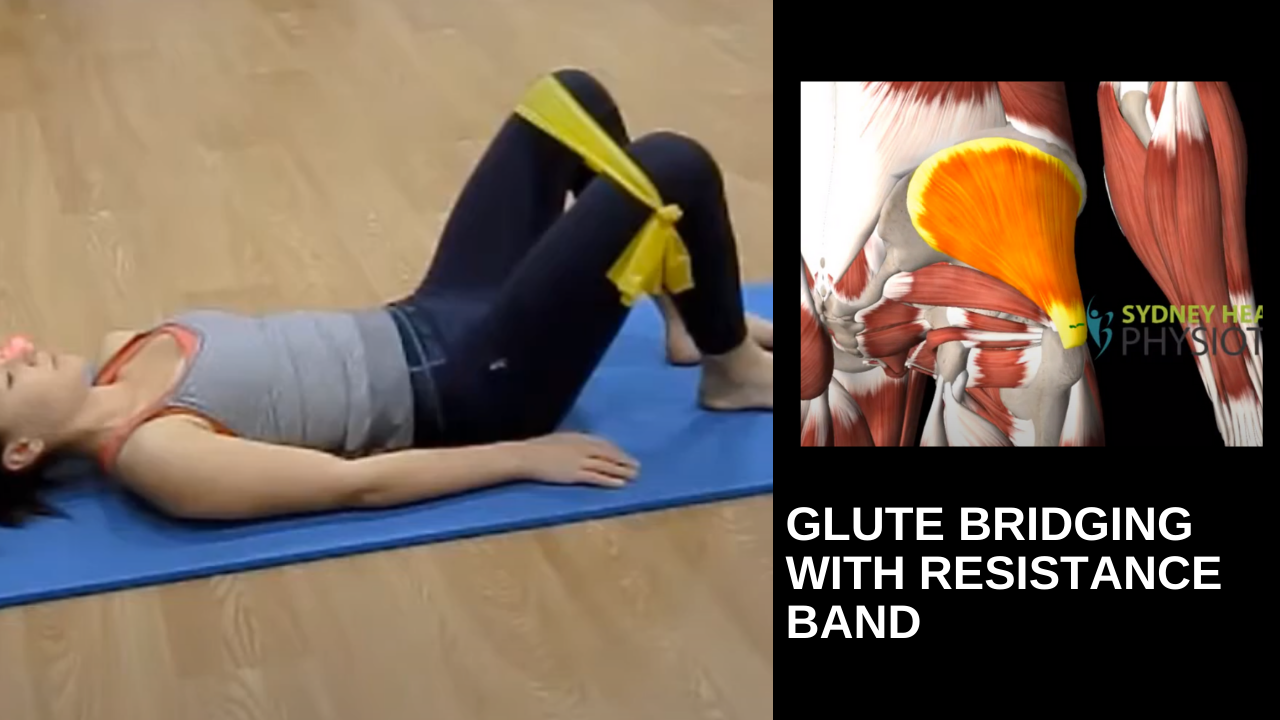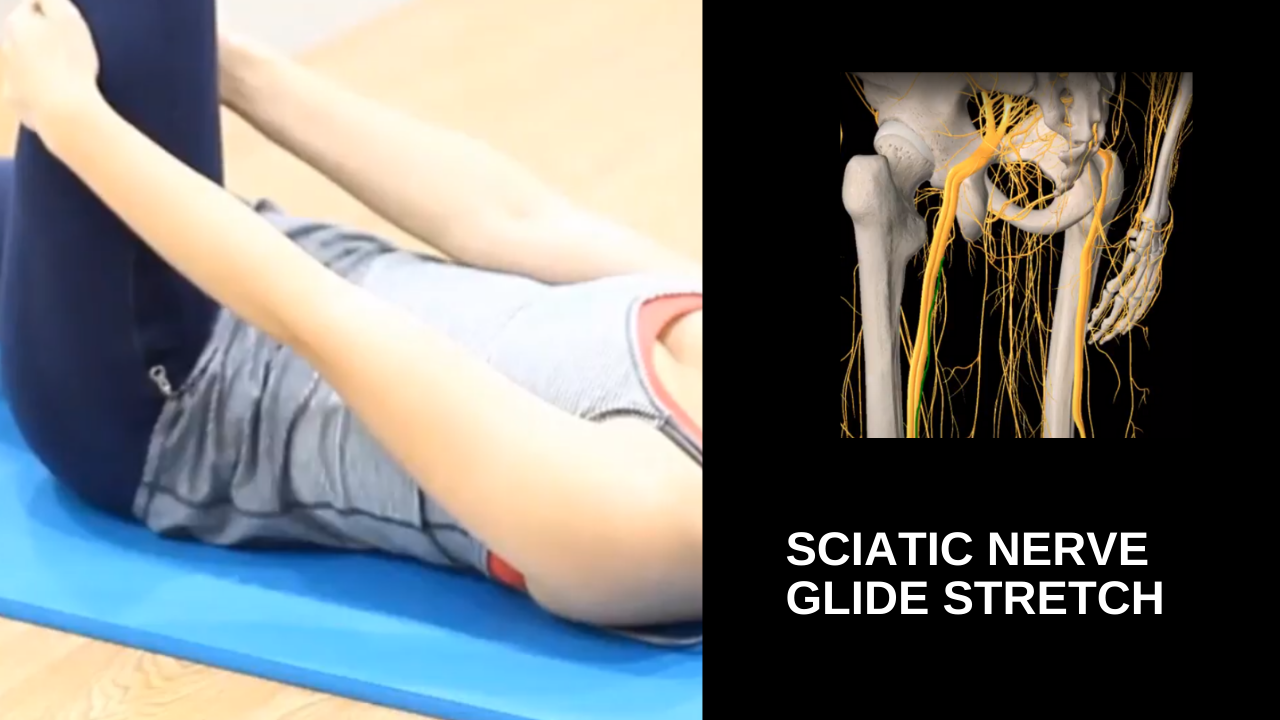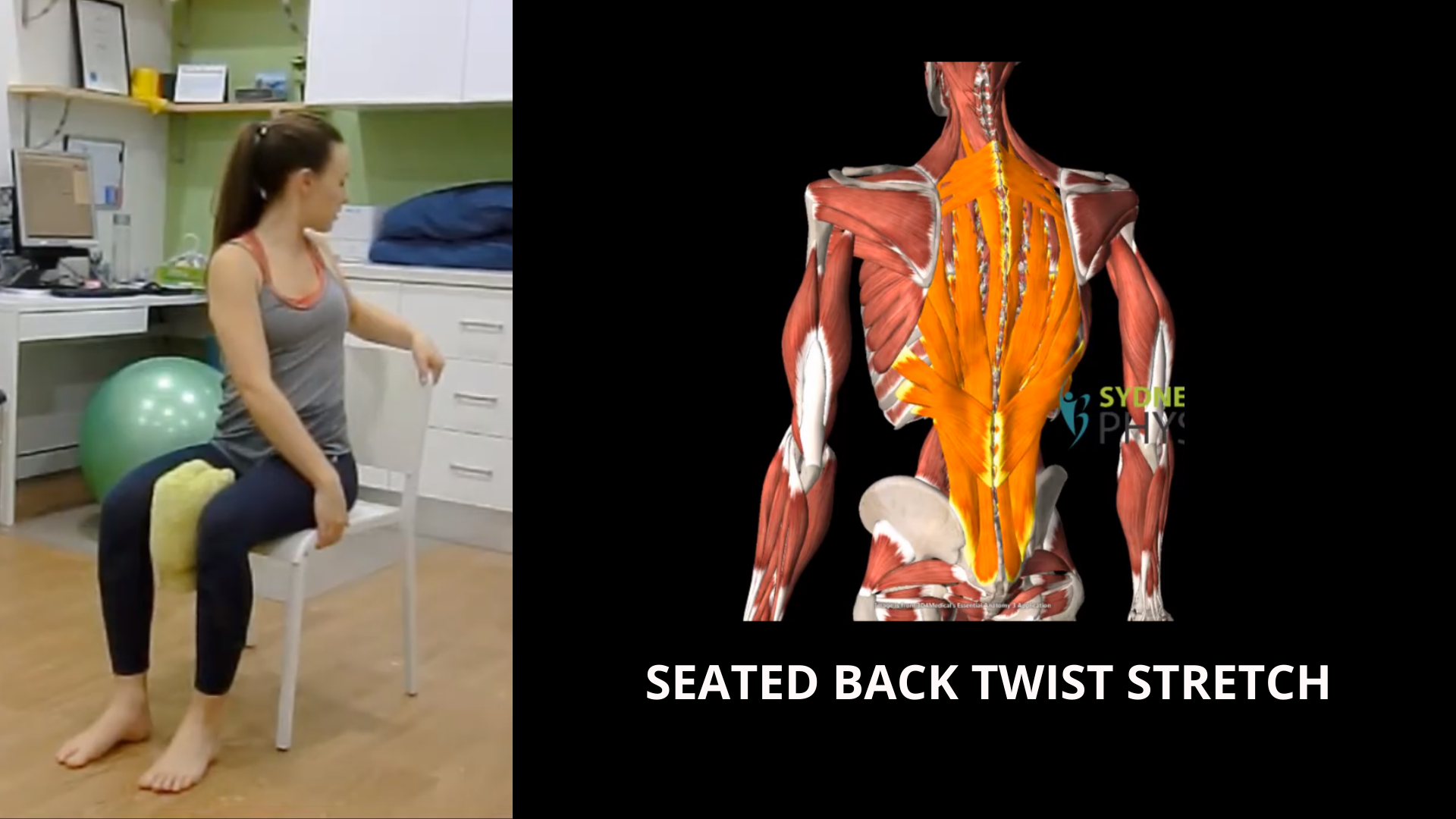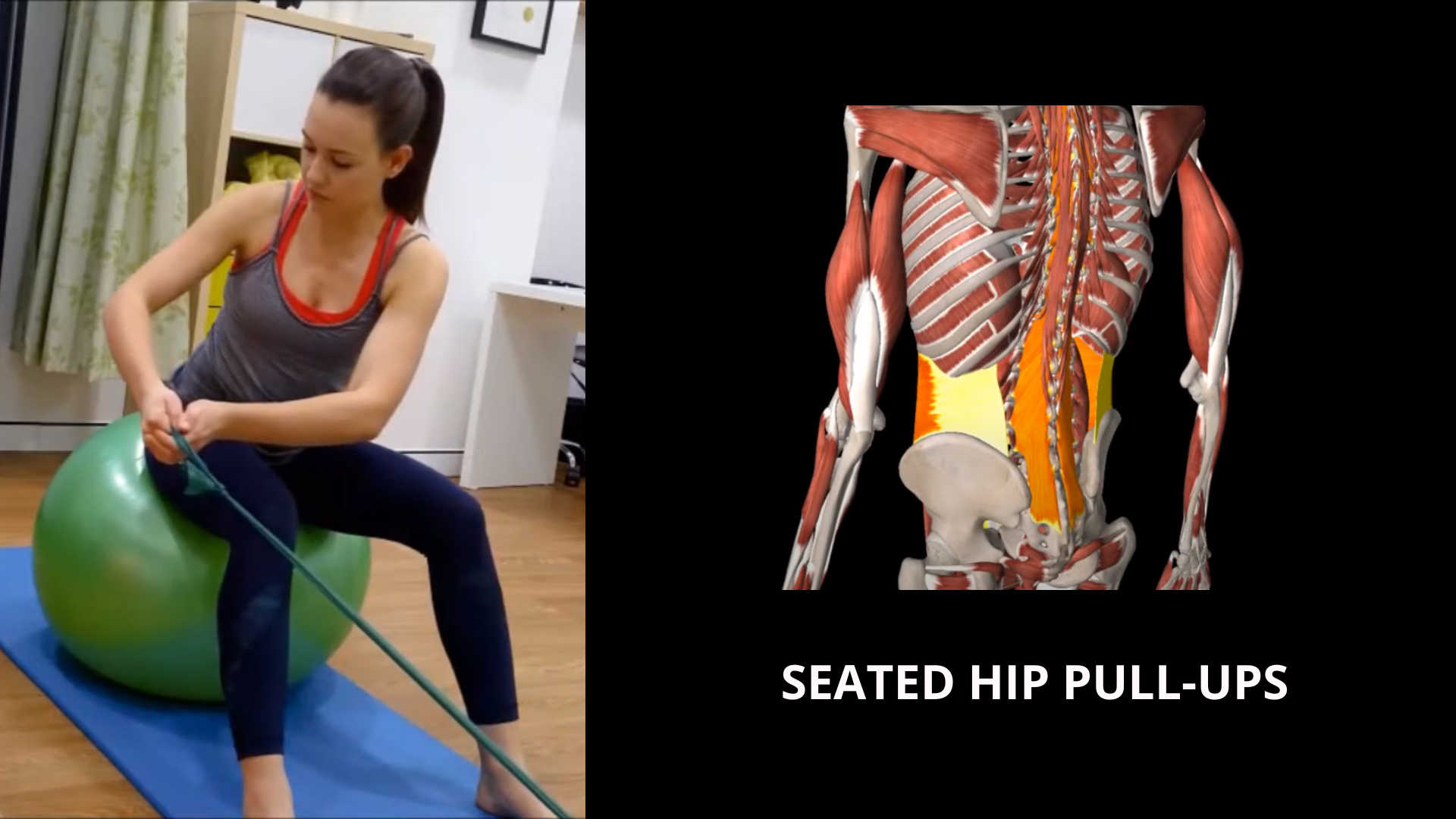Bridge with band and dumbbell
A video focusing on glute strengthening with the bridging exercise. Strong glutes support your lower back, improve posture, and enhance overall stability. Let’s dive in and build a solid foundation together!
Glute bridging with resistance band
Supine glute bridges with a band around the legs activate and strengthen the hip glutes, essential for back pain prevention and improved stability. Ideal for those with lower back discomfort, athletes, and individuals seeking core and hip support, this exercise promotes strong glutes to protect the lower back and enhance posture.
Sciatic nerve glide stretch
The lying sciatic nerve glide stretch helps relieve tension along the sciatic nerve, reducing pain and improving flexibility in the lower back, glutes, and legs. Ideal for those with sciatica or nerve-related discomfort, this exercise promotes gentle nerve mobility, easing stiffness and enhancing comfort in daily activities.
Seated trunk rotation against resistance band
The seated trunk rotation against a resistance band targets back and core muscles, enhancing rotational strength and control. Ideal for athletes, golfers, cricketers, individuals with back discomfort, and anyone aiming to improve core stability, this exercise builds resilience in the spine and promotes balanced movement.
Seated back twist stretch
The seated back twist stretch relieves tension and improves mobility in the spine, making it ideal for office workers who sit for extended periods. This stretch promotes spinal flexibility, reduces stiffness, and supports better posture, helping you feel more comfortable throughout the day.
Seated hip pull-ups
The seated-on-ball pull-ups against a resistance band exercise targets back and hip strength, making it effective for rehabilitation. Ideal for improving stability and control, this movement supports back alignment, strengthens hip muscles, and enhances core engagement for a balanced recovery.
Head back shoulder whirl
The head-back-shoulder whirl provides instant neck pain relief and rejuvenates tight muscles, easing tension and promoting relaxation. This gentle movement is ideal for relieving stiffness, improving circulation, and refreshing neck and shoulder muscles for immediate comfort.
Is your desk job causing you neck, back and shoulder pain?
Neck posture & ergonomics for office workers.
Core stability and control
How core muscles are protectors of your spine, and how do you make sure that their natural muscle tone supports your posture. The key is not to consciously keep your core activated - that is a very outdated. The key is to have that core muscle tone so it supports you without thinking about. That is core stability and core control!
Upper cross posture from long screen time
Upper-crossed posture from long screen time leads to forward-rounded shoulders and a strained neck, common among those with long office hours. This posture imbalance places excess tension on the neck and upper back muscles, often resulting in discomfort and stiffness. Addressing this with targeted exercises can help realign posture and reduce neck strain.
How dry needling works?
Dry needling targets trigger points in muscles, effectively reducing musculoskeletal (MSK) pain by relieving muscle tension and promoting natural healing. This technique helps to release tight areas, improve blood flow, and restore mobility, providing quick relief and supporting long-term pain management.














